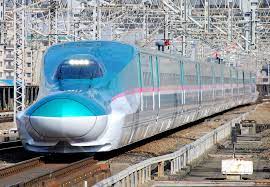
The Thane depot, located in Thane, Maharashtra, is a crucial element of the Mumbai-Ahmedabad bullet train project, covering a total distance of 508 kilometers, with 153 kilometers falling within Maharashtra. This ambitious endeavor is of great significance as it represents a flagship initiative championed by Prime Minister Narendra Modi and is entrusted to the National High-Speed Rail Corporation Ltd (NHSRCL), a collaborative effort involving the central government and participating state governments.
Designed in the style reminiscent of Japanese Shinkansen depots, the Thane depot spans an expansive area of 57 hectares and boasts cutting-edge infrastructure. It has been engineered to adhere to the highest safety and reliability standards, much akin to the renowned Shinkansen or bullet train system in Japan.
The Thane depot features facilities for the light maintenance and cleaning of train sets, including inspection bays, a washing plant, stabling lines, and more. Initially, the depot will be equipped with four inspection lines and 10 stabling lines, with future plans to expand these to eight inspection lines and 31 stabling lines.
Prominent attributes of the depot include:
- Sustainable Water Management: The depot incorporates advanced sewage treatment and effluent treatment plants to process and recycle sewage and effluent generated by train sets and depot activities. This recycled water source is expected to fulfill nearly 70% of the depot’s overall water requirements, promoting eco-friendly water management practices.
- Efficient Waste Handling: Mechanized facilities have been put in place to ensure the efficient handling of garbage and waste materials, guaranteeing proper waste management within the depot.
- Shinkansen-inspired Design: The depot’s architectural design draws inspiration from the renowned Japanese Shinkansen depots, underscoring a commitment to high-speed rail technology and safety standards.
- Optimized Infrastructure: The depot features a thoughtfully planned layout, contemporary architectural designs, effective ventilation, ample natural lighting, noise control measures, and dust suppression systems, all aimed at creating a conducive and comfortable working environment.
- Maintenance Facilities: The depot also accommodates a small maintenance depot dedicated to the stabling of inspection and maintenance vehicles, along with materials essential for the upkeep of the track, bridges, and overhead electrification (OHE) infrastructure. This ensures the seamless maintenance of the entire rail network within the Thane Depot premises.
Addressing the Challenges:
Comprehensive drainage systems have been meticulously designed to address Thane’s substantial rainfall. Given Thane’s frequent heavy rainfall, a comprehensive strategy has been devised to collect and store rainwater from depot rooftops. Rainwater is harvested and channeled into underground storage tanks located strategically on the depot grounds to efficiently capture and retain the rainwater. The stored rainwater will subsequently be available for various uses, reflecting a sustainable and environmentally conscious approach to water resource management.
Current Status:
As of the present status, the contract tender, initiated on May 30, is undergoing a technical evaluation. It’s important to note that the process of land acquisition has already been successfully completed.
NHSRCL’s Insights:
According to a spokesperson from the National High-Speed Rail Corporation Ltd, the depot will employ approximately 180 pieces of machinery belonging to 40 different types. These machinery types encompass a wide range of equipment essential for maintaining the high-speed train sets in accordance with the stringent standards set by the Shinkansen system. The depot places a strong emphasis on safety, well-being, energy efficiency, and sustainability, with potential future installation of solar panels. It will also feature essential systems like a Building Management System, an IT and Data Network System, a Fire Detection and Alarm System, and an Access Control System to ensure comprehensive operational control and security.
![]()




